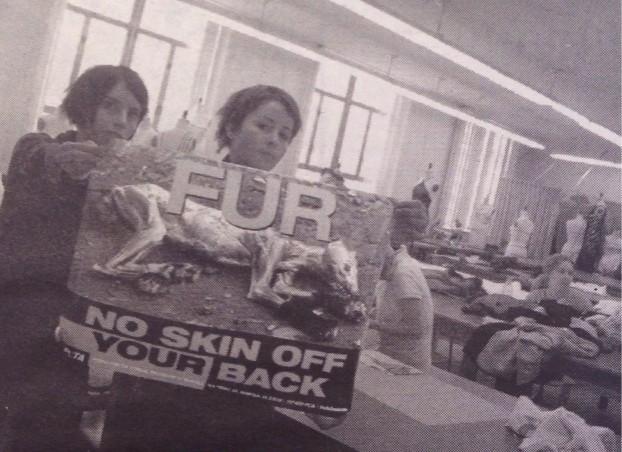By Taeeba Sadar
Two journalism students are organizing a campaign to protest the use of real animal fur by the School of Fashion.
Amanda Gowland and Amanda Factor, both third-year students, decided to mount an opposition after they learned of an elective course offered to all fashion students called FurDesignFFD502, which is taught by part-time professor Wendi Ricci.
“We are not against fashion students or the fashion program in general,” says Gowland. “But we think it’s pretty archaic to be using fur and so we just want to spread awareness.”
Gowland has contacted various animal rights groups within Toronto including the Animal Alliance of Canada and People for the Ethical Treatment of Animals. She is working with Factor to create a petition that they will circulate around campus to inform students about the treatment of animals by the fur industry.
“We want the people in the fashion program to be against this because they’re the ones who have the voice, said Factor. “If they’re against it then hopefully the course will not be offered.”
Mary McCrae, director of the fashion school, said the course probably won’t run next year.
She said the course, which last ran this fall, is important because fur is part of the fashion industry.
“It’s a material that is available in the marketplace,” she said. “Some students are interested in working with it.”
McCrae said all the fur used came from fur farms, instead of from trapped animals.
“To the best of our knowledge, the animals are being raised in a way that is humane,” she said.
The halls of the fashion school are rife with voices representing many sides of the debate.
Emma Doyle, a second-year fashion student, is an animal rights activist. She said she will definitely take part in an animal rights movement on campus.
“I wouldn’t take that course,” she said. “I’m a vegan and I don’t use any animal products. If you want the look of real fur and you can get it by using synthetics then use it because it’s purely for aesthetics.”
Ramona Rotaru, another second-year student in the fashion program, remains neutral about the issue but argues that from a fashion perspective, fake fur is a good alternative.
“Everybody has their own opinion,” said Rotaru. “I don’t plan on using fur in the future but on the runways, nobody can tell if it’s real or not.”
Richard Madden, who is in his third-year of the fashion program, said he has taken the controversial fur design course. He argues that some animal rights protesters have oversimplified the debate and tend to ignore some of the benefits associated with using real furs.
“Synthetic fur is more harmful to the environment,” says Madden. “Gortex is oil-based and the chemicals used to make synthetic fibers are usually pumped into the water. The [fake] coat is usually thrown out after two years and it never biodegrades and it ends up in a landfill. Fur is re-worked, it’s biodegradable and it’s a renewable resource.”
He also argues that taking animals from the wild is a heavily regulated process.
“Everything is monitored,” said Madden. “Control standards have been put in plce by the Fur Council of Canada and by the government.”
However, Gowland remains firm in her position.
“It’s really haunting to see those animals in the cages,” says Gowland. “I know that we aren’t the only two people that think there is something wrong with using the skin of an animal to promote fashion.”
Gowland and Factor are planning to hold a protest demonstration during the Mass Exodus fashion show scheduled for April at Ryerson.











Leave a Reply